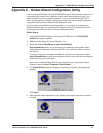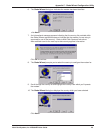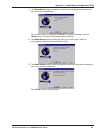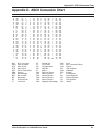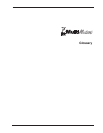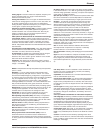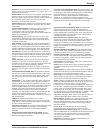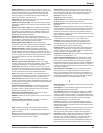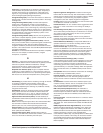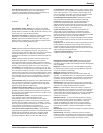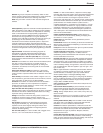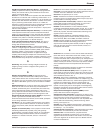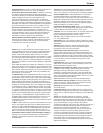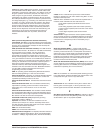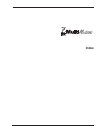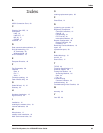
Glossary
Multi-Tech Systems, Inc. MT5634ZPX User Guide 60
Type B: The uplink (USB Type B) connector. A Type B Connector
is for detachable external cables. Allows for double ended cable
assemblies. Connectors for USB come in two designs: the 'A' and
'B' types. Upstream connections (computer, hub input, etc.) are
made using the 'A' type connector, downstream connections
(peripherals, hub outputs) are made using the 'B' type connector.
The USB spec defines two types of connectors to protect the bus
from illegal topologies (e.g., connecting one downstream port back
to another, etc.) and to prevent end-user confusion. This allows
end users to easily attach the correct connectors to peripherals
and ports. Type A Plug and receptacle are to be used for those
devices on which the external cable is permanently attached to
devices such as Keyboard, mouse and hubs. Series B Plug and
receptacle are to be used for those devices that require an
external detachable cable such as printers, scanners and
modems.
U
UART (Universal Asynchronous Receiver/Transmitter)
(pronounced “you art”): A chip that transmits and receives data
on the serial port. It converts bytes into serial bits for transmission,
and vice versa, and generates and strips the start and stop bits
appended to each character.
UHCI (Universal Host Controller Interface): The USB Universal
Host Controller Interface. All transfers on the USB are initiated by
the host system’s host controller. The host controller is
responsible for controlling traffic on the USB and can be
appropriately programmed to transfer data to and from USB
devices. This is typically a PCI device that can be programmed to
run a given schedule of transfers on the USB and bus master the
results into memory for processing by the host software. There are
currently two standards for host controllers: OpenHCI (OHCI or
Open Host Controller Interface) and UHCI (Universal Host
Controller Interface). Both these standards define register level
interfaces of the host controller to PCI bus. Bandwidth allocation
over the USB is software managed and is done by the
programming of the host controller.
UNIX: An operating system developed by Bell Laboratories that
features multiprogramming in a muti-user environment.
Universal Serial Bus: A collection of Universal Serial Bus devices
and the software and hardware that allow them to connect the
capabilities provided by functions to the host.
Universal Serial Bus Device: Includes hubs and functions. See
device.
Universal Serial Bus Driver: The host resident software entity
responsible for providing common services to clients that are
manipulating one or more functions on one or more Host
Controllers.
Universal Serial Bus Interface: The hardware interface between
the Universal Serial Bus cable and a Universal Serial Bus device.
This includes the protocol engine required for all Universal Serial
Bus devices to be able to receive and send packets.
Unshielded Twisted Pair (UTP): Telephone-type wiring.
Tansmission media for 10Base-T.
Upstream: The direction of data flow towards the host. An
upstream port is the port on a device electrically closest to the
host that generates upstream data traffic from the hub. Upstream
ports receive downstream data traffic.
USB: See Universal Serial Bus.
USBD: See Universal Serial Bus Driver.
USB Performance categories: Low Speed (Interactive Devices at
10-100 Kb/s); Medium Speed (Phone, Audio, Compressed Video
at 500Kb/s - 10Mbp/s); High Speed (Video, Disk at 25-500 Mb/s)
V
V.25bis: An ITU-T standard for synchronous communications
between a mainframe or host and a modem using HDLC or other
character-oriented protocol.
V.54: The ITU-T standard for local and remote loopback tests in
modems, DCEs and DTEs. The four basic tests are:
• local digital loopback (tests DTE send and receive
circuits),
• local analog loopback (tests local modem operation),
• remote analog loopback (tests comm link to the remote
modem), and
• remote digital loopback (tests remote modem
operation).
Virtual Circuit: A logical connection. Used in packet switching
wherin a logical connection is established between two devices at
the start of transmission. All information packets follow the same
route and arrive in sequence (but do not necessarily carry a
complete address).
W
Wide Area Network (WAN): 1. A network that provides
communication services to a geographic area larger than that
served by a local area network or a metropolitan area network,
and that may use or provide public communication facilities. 2. A
data communications network designed to serve an area of
hundreds or thousands of miles; for example, public and private
packet-switching networks, and national telephone networks.
Contrast with local area network (LAN).
Wide Area Telecommunications Service (WATS): A low-cost toll
service offered by most long distance and local phone companies.
Incoming (800 call service, or IN-WATS) and outgoing WATS are
subscribed to separately, but over the same line.
X
X.25: ITU-T’s definition of a three-level packet-switching protocol
to be used between packet-mode DTEs and network DCEs. X.25
corresponds with layer 3 of the 7-layer OSI model.
Y
Yellow Alarm: An error indication sent by the T1 device when it
has not gotten a receive signal, or cannot synchronize on the
receive signal received. Contrast “Red Alarm” and “Blue Alarm”.
Z
Zero Byte Time Slot Interchange (ZBTSI): A method for allowing
64 Kbps unrestricted user data (allowing all 0s in the user data).
An alternative to (but not as popular as) B8ZS.



